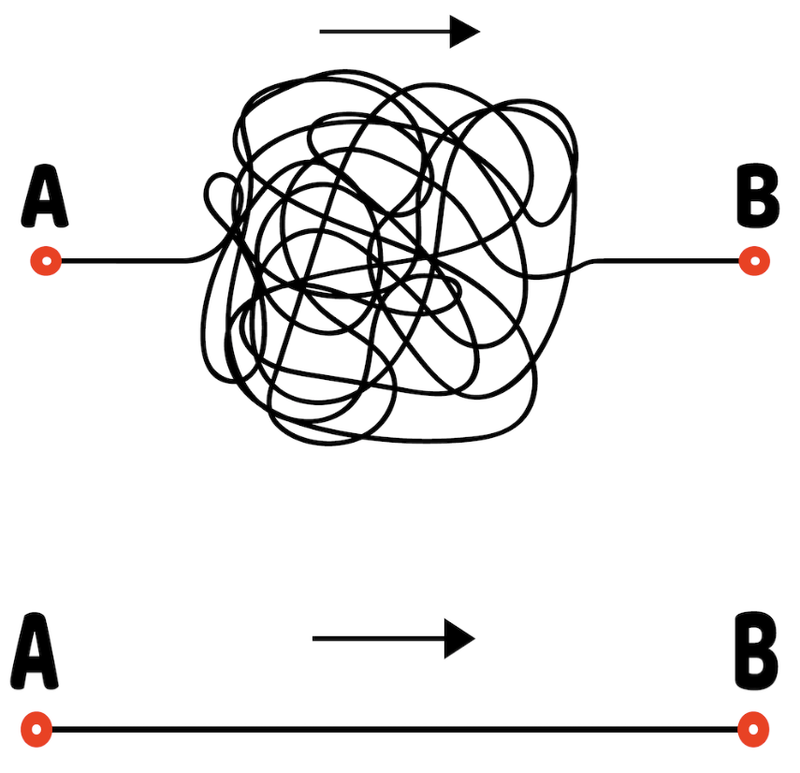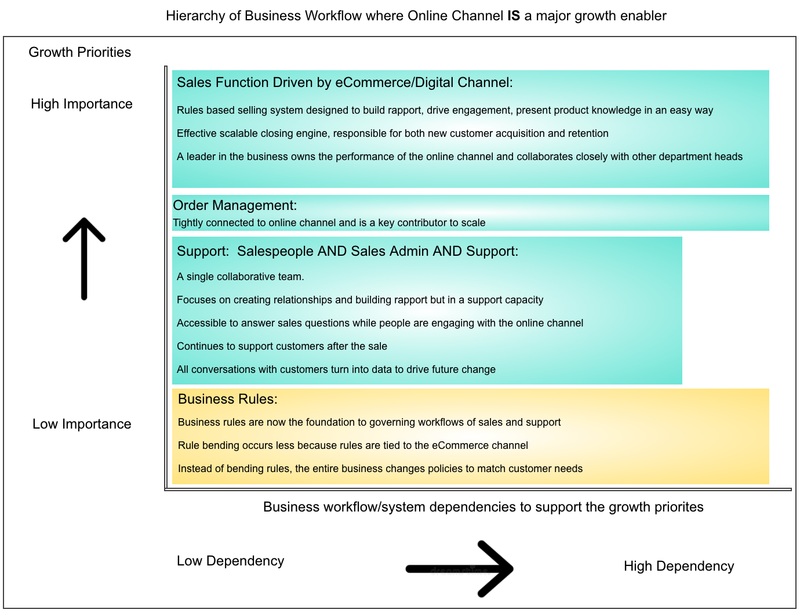
Australia is blessed with a number of great eCommerce Agencies. These are organisations who work with a Retailer/B2B and plan, design, and build a new eCommerce platform which slots into existing business systems.
These Agencies, come in various shapes and sizes, but their ability to run and lead a replatform project is to a high standard. I have had the good fortune of working with these Australian Agencies and many perform better than Agencies based in Europe and the US!
- But why is the replatform project so painful for the Retailer/B2B?
- Why does there continue to be stories about how a Retailer/B2B had a bad experience working with an eCommerce Agency?
The answer is simple. The wrong type of people are leading the Replatform project from both sides.
- The eCommerce Agency has a Project Manager
- The Retailer/B2B has a project sponsor who can be a number of things within the business: CEO, Marketing Manager, CFO, Operations Manager, eCom Manager etc...
What's missing? A specialist in leading change/transformation for businesses.
While the above comments speak specifically to Australia, this issue is global.

Why is Change Management an important function for a eCommerce Replatform project?
There are four key reasons why change management is at the essence of an eCommerce replatform project....
1. An eCommerce Replatform project = Change:
Any business embarking on an eCommerce replatform is setting itself up for business change at multiple levels. Improving an eCommerce solution is improving how a business wants to engage and interact with new and existing customers.
This desire to improve has dependencies far beyond the eCommerce technology itself. Understand the different layers needed to improve the Customer Experience Design.
There is a reliance on resource, system integrations, processes, business department structures, and other business fundamentals that all must align to support this change.
2. There is a science to Change Management:
There is an absolute right and wrong way to lead a business through an evolution. Get this science wrong and the risks are great...
- Department heads are not in support of the change and dig their heels in to protect their own patch.
- The lack of preparedness of change causes fear and anxiety among employees paralysing the business.
- The absence of communications illustrating the change creates the fear of the unknown, causing the entire business to push back on the Replatform project.
- Steps 1, 2, and 3 impact the budget/investment needed to execute the replatform project.
The list of risks go on.
3. Bad Project Experiences Correlates to a Platform-Stigma:
A bad replatform project experience creates a stigma or negative connotation towards the new Platform, the replatform project, AND the eCommerce Agency.
This risks any future business cooperation to drive change relating to the online channel.
This stigma impacts the ongoing effort and focus needed to drive the new eCommerce Platform once the replatform project is completed. Research proves the true success of the online channel is in the ongoing iterative evolution which is never-ending.
McKinsey Agrees and had this to say from a recent research paper they put together on Business Growth...
Digital leaders, in fact, run four times faster than their peers in terms of performing key managerial functions, such as engaging with data and sharing results of test-and-learn activities, particularly as they relate to customer service.
To enable speed in e-commerce, companies need to get a bewildering number of things right. But we’ve found that three elements are particularly important: a test-and-learn culture, operations to support rapid reaction, and a customer-first commitment.
The stigma is also debilitating for the eCommerce Agency who becomes a critical business partner. To start this relationship off on the wrong footing is harmful for both parties.
4. Change Management Enables Planning to be Customer Centric:
When change planning is not in place, it drives a reactive method of decision making in a Replatform project. The right change management function, enables proactive and customer-centric planning forming the bases and foundation to drive the right decision-making throughout the replatform project.
You've got to start with the customer experience and work back toward the technology, not the other way around.
Steve Jobs
And when a business has this customer-centric clarity, the ability to simplify and enhance future experiences and journeys, become easier to address.

Where does the Change Management Function Sit?
Where does this Change Management function fit in an eCommerce replatform project?
The ideal scenario is to bring in a Change Consultant, or Digital Business Transformation Specialist (like myself). This is an individual who sits in the middle and collaborates with the Retailer/B2B and the eCommerce Agency ahead of time before the replatform project commences.
This specialist knows what change needs to look like to prepare a business to fully benefit from a new eCommerce replatform. As stated above, this is a science.
Do not misinterpret the "science" statement. This does not mean each business changes in the same way. No two businesses on this planet have the same type of evolutionary change. Every business is different due to the many variables that come into play.
If a specialist is not brought in, the second (less ideal option) is for there to be a "change role" to be in place for the eCommerce Agency and the Retailer/B2B.
What does the Change Management function do? Defines the Business Future:
For an eCommerce Replatform project to run smoothly for all parties, a separate body of work is required to focus on how the Retailer/B2B needs to evolve to fully leverage the new eCommerce Platform.
This is where the true value of a Change Consultant comes into play.
Good Vs Bad Business Structures:
Around the world today, there are businesses who are highly successful and those who are underperforming purely due to their business structure.
Those businesses who are underperforming invest millions in new eCommerce Platforms and never achieve ROI because their existing business structure is designed to stifle eCommerce channels.
It takes strategic planning and the right treatment of change to evolve/design a business to leverage and maximise the potential of the online channel.
The role of this Change Specialist (or Digital Business Transformation Specialist) is to assess a business in its current state and assist in its preparedness to evolve to a new form of business structure that will allow the online channel to drive overall business growth.
To illustrate this dynamic of good vs bad business structures in greater detail, I wrote research paper defining the specific dynamics of good vs bad business structures.

Change is Designed at a "Pace":
The Specialist architects the pace, or the speed in which a business evolves. Every business moves at a different pace/speed. It's the job of the Specialist to assess what pace a business is comfortable with and honour it!
This dynamic of pace is another example of how and why this Change function is a scientific specialist skill set rarely found in the Digital/eCommerce space. And rarely exists internally with Retailers/B2B's.
Conclusion:
The tense and difficult experiences occurring during replatform projects are not the fault of the eCommerce Agency. The tension comes as a result of the lack of preparedness a Retailer or B2B organisation.
Business leaders need to understand, a new eCommerce Platform is NOT like a puzzle piece. You simply do not replace one piece with another. By taking out the old puzzle piece you are rearranging the entire puzzle.
When a Business is ready to replatform its eCommerce technology it's a symbol of it acknowledging it needs to engage more effectively with new and existing customers. That's step 1.
Step 2 is for the Business to appreciate the myriad of business departments, processes, resources, and supporting systems that must evolve and prepare for a new and improved customer touchpoint.
For this to happen to the right standard requires a Specialist to work with an individual or committee of change leaders within the Retail/B2B business to drive the "Change Plan" internally.
This article was as tagged as Best Practice , Digital Strategy , eCommerce Consulting